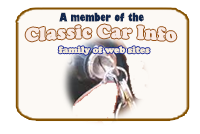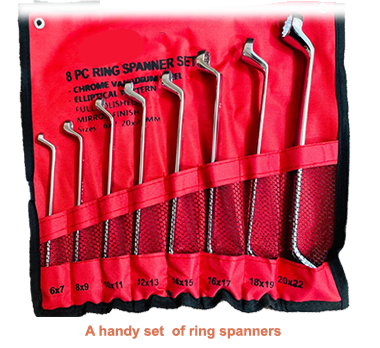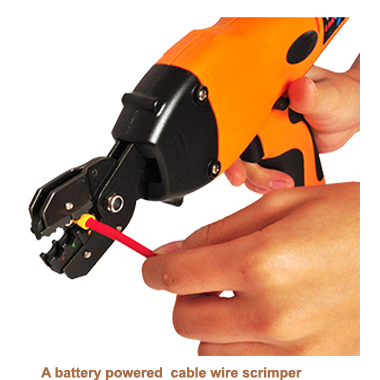
The quality and range of hand tools that the owner/operator of a classic car maintenance or restoration workshop will significantly influence both the efficiency of their work as well as the results achieved.
 Hand tools have long been the foundation of working on cars, although the last century has witnessed significant changes. The first breakthrough was the introduction of power-driven tools followed by the rise of battery-operated cordless systems.
Hand tools have long been the foundation of working on cars, although the last century has witnessed significant changes. The first breakthrough was the introduction of power-driven tools followed by the rise of battery-operated cordless systems.
Every category of hand tools possesses their distinct strengths and weaknesses. It is important for the maintenance shop owner to embrace the benefits and drawbacks of each tool available on the market when determining a budget to equip a workspace with hand tools.
 Conventional hand tools come with many benefits in particular allowing the operator to carry out intricate automotive tasks such as tightening bolts by feel instead of been dependant on torque settings, or fine-tuning the carburettor on a classic cars.
Conventional hand tools come with many benefits in particular allowing the operator to carry out intricate automotive tasks such as tightening bolts by feel instead of been dependant on torque settings, or fine-tuning the carburettor on a classic cars.
 They are also much less liable to fail than any form of powered equipment. Due to the lack motors, batteries, or electrical components that will eventually begin to cause problems. A quality spanner, screwdriver or hammer will last for many years with little upkeep required.
They are also much less liable to fail than any form of powered equipment. Due to the lack motors, batteries, or electrical components that will eventually begin to cause problems. A quality spanner, screwdriver or hammer will last for many years with little upkeep required.
In addition, conventional hand tools are typically more affordable, making them a cost-effective option when establishing a workshop. The lack of dependence on sources of power gives the owner a lot of freedom, as conventional hand tools are consistently available for use, providing flexibility in situations involving remote or mobile repairs.
The biggest and most obvious drawback when it comes to conventional hand tools is that they will always be considerably more labour-intensive than their power-driven counterparts.
Tasks like loosening rusted bolts or sanding panels can demand considerably more effort when performed manually, potentially hindering productivity.
 Even the most experienced mechanics will find that using conventional hand tools on a regular basis requires considerably more time than powered options, particularly for repetitive tasks.
Even the most experienced mechanics will find that using conventional hand tools on a regular basis requires considerably more time than powered options, particularly for repetitive tasks.
That’s one of the reasons why the car industry began to seek alternatives to hand driven tools. During the Thirties in the US traditional car maintenance workshop began to experiment with hand tools powered by compressed air.
Those included impact wrenches, sanders, grinders, drills, and chisels, particularly for dismantling and fabricating bodywork, spray painting and finishing.
 At the end of World War Two compressors and the tools to use on them became more affordable, and by the mid Fifties had become standard equipment in professional garages.
At the end of World War Two compressors and the tools to use on them became more affordable, and by the mid Fifties had become standard equipment in professional garages.
While pneumatically powered tools had their obvious advantages in a maintenance workshop, their disadvantages were many.
The first was that pneumatic systems could only be powered by e large compressors backed up by storage tanks, regulators, with the power reaching he tool through a system of heavy and cumbersome hoses. This infrastructure was found to decrease portability and take up valuable workshop space.
T hese were just some of the reasons why electrically operated (corded) power tools began to appear in the early Fifties. They early versions, although rudimentary, were welcome in most cars workshops simply because they offered a reliable supply of power.
hese were just some of the reasons why electrically operated (corded) power tools began to appear in the early Fifties. They early versions, although rudimentary, were welcome in most cars workshops simply because they offered a reliable supply of power.
Electrically operated power tools were found to be well-suited for such challenging tasks as cutting metal panels, drilling into hardened steel, or polishing bodywork over extended periods.
 Corded tools were found to offer greater value over time, especially in high-usage workshops, where their endurance in ongoing use
allowed them to be operated for long periods without overheating or losing their effectiveness.
Corded tools were found to offer greater value over time, especially in high-usage workshops, where their endurance in ongoing use
allowed them to be operated for long periods without overheating or losing their effectiveness.
With all of the positive aspects that electrically powered tools brought to the workplace, it was soon observed that they did also come with their fair share of drawbacks. The first was their limited mobility, with the dependence on cords connected to a specific power outlet, posing unlimited challenges in spacious or busy workshops.
Trailing cables often lead to some serious workshop accident ds such as tripping over the wires, tangling them, a factor which was known to cause unintentional damage to both machinery and vehicles.
 In addition certain corded tools, especially grinders and drills, were known to generate significant noise levels, leading to workshop fatigue if ear protection is not used appropriately.
In addition certain corded tools, especially grinders and drills, were known to generate significant noise levels, leading to workshop fatigue if ear protection is not used appropriately.
When battery-operated tools first came on the scene in the late Sixties they caused something of a sensation in classic car maintenance workshops because of their portability and flexibility
Battery-operated tools offer the convenience of being free from cords and hoses, allowing for use in almost any location, in or out of maintenance workshop,. It was rapidly recognized that cordless impact wrenches, ratchets, and drills were capable of greatly reducing the time needed for routine maintenance tasks.
The ability to eliminate cords from the floor combined to enhance workshop safety and minimise clutter, decreasing the risk accidents in the workshop.
In recent years developments in technology, in particular contemporary lithium-ion batteries and brushless motors combined to provide remarkable torque and reliable performance. Numerous platforms enable the use of a single battery to power various tools, enhancing the efficiency of workshop management.
One of the most prominent drawbacks in operating cordless power remains the
limited runtime of their batteries that can deplete rapidly when under heavy use, a factor which will affect reliability for longer drawn out tasks such as grinding or continuous sanding.
Replacing batteries and spare parts, especially chargers can considerably increase the initial investment. The reliability of tools is directly linked to the quality of the charging infrastructure. When batteries are left unattended overnight or chargers malfunction, it will lead to periods of inactivity.
 When comparing, cordless (battery driven) hand tools and electrically powered tools, the latter were found to be consistently the most affordable, both in terms of purchase price and maintenance costs. Corded tools were more expensive to acquire because of their battery systems, although, they can be more economical in the long run. Battery systems necessitate significant ongoing investment because of the need for battery replacement.
When comparing, cordless (battery driven) hand tools and electrically powered tools, the latter were found to be consistently the most affordable, both in terms of purchase price and maintenance costs. Corded tools were more expensive to acquire because of their battery systems, although, they can be more economical in the long run. Battery systems necessitate significant ongoing investment because of the need for battery replacement.
 A well-equipped car maintenance workshop should view these three categories of tools not as competitors, but as complementary resources. Hand tools offer enduring reliability, accuracy, and cost-effectiveness. Battery-operated tools enhance speed, mobility, and safety, making them particularly beneficial in dynamic modern workshops and mobile service operations. Electrically operated corded tools are essential for heavy-duty tasks that require continuous use, offering both reliability and significant power.
A well-equipped car maintenance workshop should view these three categories of tools not as competitors, but as complementary resources. Hand tools offer enduring reliability, accuracy, and cost-effectiveness. Battery-operated tools enhance speed, mobility, and safety, making them particularly beneficial in dynamic modern workshops and mobile service operations. Electrically operated corded tools are essential for heavy-duty tasks that require continuous use, offering both reliability and significant power.
In the end, the most successful workshop will combine all three elements: hand tools for precision and dependability, battery-operated tools for convenience and effectiveness, and corded tools for demanding power needs. By achieving this balance, mechanics are equipped to tackle any automotive task with assurance, effectiveness, and safety.